Cat Overgrooming: Complete Guide to Excessive Licking in Cats
Cat overgrooming is when cats lick, bite, or chew their fur excessively beyond normal hygiene, causing visible hair loss and skin irritation. Normal cats groom 2-5 hours daily; overgrooming cats spend 8+ hours targeting the same areas repeatedly.
Table of Contents
What Is Cat Overgrooming?
Cats are naturally meticulous groomers, spending 30-50% of their waking hours maintaining their coat. However, when this normal behavior becomes excessive, it transforms into a concerning condition known as excessive grooming.
Overgrooming occurs when cats lick, bite, or chew their fur beyond what's necessary for hygiene, often resulting in hair loss, skin irritation, and even open sores. This compulsive behavior can affect any area of a cat's body but commonly targets the belly, inner legs, and base of the tail.
The act of grooming releases endorphins in cats, creating a self-soothing effect that can make excessive grooming a difficult habit to break. What often starts as a response to physical discomfort or stress can evolve into a compulsive behavior that persists even after the original trigger has been resolved.
Normal vs Excessive Grooming in Cats
Understanding the difference between normal and excessive grooming is crucial for cat owners to identify when their pet needs help.
Normal grooming: 2-5 hours daily with no hair loss or skin damage. Excessive grooming: 5+ hours daily causing bald patches, red irritated skin, and compulsive behavior that's difficult to interrupt.
Normal Grooming Behavior
Healthy cats typically exhibit these grooming patterns:
- Duration: 2-5 hours daily, distributed throughout the day
- Timing: After meals, play sessions, or stressful events
- Coverage: Even distribution across the entire body
- Appearance: No hair loss, bald patches, or skin irritation
- Behavior: Calm, methodical licking with occasional pauses
Signs of Excessive Grooming
Problematic grooming behaviors include:
- Visible hair loss: Bald patches or significantly thinned areas
- Skin damage: Red, irritated, or wounded skin from constant licking
- Focused attention: Repeatedly targeting the same body area
- Increased frequency: Grooming sessions lasting hours without breaks
- Compulsive nature: Difficulty interrupting the grooming behavior
- Secondary issues: Increased hairballs or digestive problems
Medical Causes of Cat Overgrooming
Medical causes (70% of cases): Flea allergies, food allergies (chicken, beef), skin infections, parasites, and pain conditions. Behavioral causes (30%): Stress, anxiety, boredom, and environmental changes. Siamese, Abyssinian, and Burmese breeds are 3x more susceptible.
Medical conditions are responsible for the majority of excessive grooming cases in cats. Identifying and treating these underlying health issues is essential for resolving the behavior.
Skin Allergies and Sensitivities
Food Allergies
Food allergies affect 10-15% of cats with skin problems and commonly involve proteins such as:
- Chicken (most common allergen)
- Beef and dairy products
- Fish and seafood
- Eggs and wheat
Cats with food allergies typically show overgrooming around the head, neck, and ears, often accompanied by gastrointestinal symptoms.
Environmental Allergies
Environmental allergens that trigger excessive grooming include:
- Pollen from trees, grasses, and weeds
- Dust mites and household dust
- Cleaning products and air fresheners
- Cigarette smoke and perfumes
- Certain fabrics or carpet materials
Flea Allergy Dermatitis
Flea allergy dermatitis is the most common cause of excessive grooming in cats. Even indoor cats can be affected, as fleas can enter homes on clothing or other pets. Key characteristics include:
- Intense itching, especially at the base of the tail
- Small, red bumps on the skin
- Presence of "flea dirt" (black specks) in the fur
- Overgrooming of the lower back and hindquarters
Parasites and Infections
External Parasites
- Fleas: Cause intense itching and allergic reactions
- Mites: Ear mites lead to head and neck scratching
- Lice: Rare but can cause localized itching
- Ticks: May cause irritation at attachment sites
Fungal Infections
- Ringworm: Creates circular patches of hair loss
- Yeast infections: Often secondary to allergies or moisture
- Malassezia: Causes greasy, smelly skin conditions
Bacterial Infections
Secondary bacterial infections often develop from excessive licking and scratching, creating a cycle of irritation and overgrooming.
Pain-Related Grooming
Cats often groom areas where they experience pain or discomfort:
Arthritis and Joint Pain
- Overgrooming of painful joints (hips, knees, spine)
- More common in senior cats
- May be accompanied by reduced mobility
Urinary Tract Issues
- Excessive genital and lower belly grooming
- May indicate cystitis, stones, or infections
- Often accompanied by litter box changes
Dental Problems
- Facial grooming and pawing at the mouth
- Tooth pain or gum disease
- Changes in eating habits
Hormonal and Systemic Conditions
Hyperthyroidism
- Increased grooming activity
- Weight loss despite increased appetite
- Hyperactivity and restlessness
Hormonal Imbalances
- Reproductive hormones in unspayed cats
- Seasonal changes affecting behavior
- Stress-related hormone fluctuations
Behavioral Causes of Excessive Grooming
When medical causes have been ruled out, behavioral factors often drive compulsive grooming behaviors in cats.
Psychogenic Alopecia (Stress-Induced Overgrooming)
Psychogenic alopecia is a stress-related condition where cats develop compulsive grooming habits as a coping mechanism. This condition accounts for approximately 10-15% of all feline hair loss cases.
Common Stress Triggers:
- Environmental changes: Moving homes, renovations, new furniture
- Social stress: New pets, family members, or visitors
- Routine disruptions: Changes in feeding times, owner schedules
- Territorial issues: Outdoor cats visible through windows
- Owner stress: Cats often mirror their owner's emotional state
- Medical procedures: Veterinary visits, grooming appointments
Characteristics of Psychogenic Alopecia:
- Symmetrical hair loss patterns
- Typically affects easily reached areas (belly, inner legs, flanks)
- No underlying skin disease
- Often occurs when the cat is alone or stressed
Boredom and Lack of Environmental Enrichment
Indoor cats without adequate mental and physical stimulation may develop excessive grooming as a displacement behavior.
Risk Factors for Boredom-Related Overgrooming:
- Single cats without feline companionship
- Limited interactive toys or environmental enrichment
- Owners away for extended periods
- Lack of vertical spaces or hiding spots
- Insufficient play and exercise opportunities
Signs of Under-Stimulation:
- Excessive sleeping (more than 16 hours daily)
- Destructive behaviors
- Attention-seeking behaviors
- Overeating or food obsession
- Repetitive behaviors beyond grooming
Learned Behaviors and Habits
Sometimes excessive grooming becomes a learned behavior that persists even after the original trigger is removed:
- Attention-seeking: Cats learn that grooming gets owner attention
- Routine establishment: Grooming becomes part of daily routine
- Comfort association: Grooming provides emotional comfort
- Displacement activity: Used to cope with conflicting emotions
Signs and Symptoms of Cat Overgrooming
Recognizing the early signs of excessive grooming allows for prompt intervention and better treatment outcomes.
Physical Signs
Hair Loss Patterns:
- Symmetrical alopecia: Even hair loss on both sides of the body
- Barbering: Hair appears cut short rather than completely missing
- Complete baldness: Areas with no hair remaining
- Thinning: Gradual reduction in hair density
Skin Changes:
- Redness and inflammation
- Scratches or wounds from claws
- Scabs and crusting
- Hyperpigmentation (darkening of skin)
- Secondary bacterial infections
Common Affected Areas:
- Belly: Most commonly affected area
- Inner thighs: Easy to reach and often targeted
- Flanks: Sides of the body
- Base of tail: Especially with flea allergies
- Legs: Front and back legs, particularly inner surfaces
Behavioral Signs
- Increased grooming frequency: More than 5 hours daily
- Intense focus: Concentrating on specific body areas
- Difficulty interrupting: Continuing to groom when called or distracted
- Grooming at unusual times: During play or feeding
- Aggressive grooming: Biting or pulling at fur
- Vocalising while grooming: Crying or growling during grooming
Secondary Health Issues
Digestive Problems:
- Increased hairball frequency
- Vomiting undigested hair
- Constipation from hair accumulation
- Potential intestinal blockages
Skin Complications:
- Secondary bacterial infections
- Yeast overgrowth
- Chronic dermatitis
- Scarring from repeated trauma
Diagnosis and Veterinary Care
Proper diagnosis is essential for effective treatment of excessive grooming in cats. A systematic approach helps identify underlying causes and develop appropriate treatment plans.
Veterinary Examination Process
Initial Assessment:
- Complete medical history
- Physical examination of affected areas
- Assessment of grooming patterns
- Evaluation of environmental factors
Diagnostic Tests:
- Skin scrapings: To check for mites and parasites
- Fungal cultures: To identify ringworm or yeast infections
- Bacterial cultures: For secondary skin infections
- Allergy testing: Blood tests or intradermal testing
- Food elimination trials: To identify food allergies
- Biopsy: In cases of unusual skin changes
Additional Testing:
- Blood work to check for systemic diseases
- Thyroid function tests
- Urinalysis for urinary tract issues
- X-rays for joint problems
Differential Diagnosis
Veterinarians must distinguish between various causes of hair loss:
- Self-induced: From excessive grooming
- Infectious: Bacterial, fungal, or parasitic
- Allergic: Food or environmental allergies
- Hormonal: Endocrine disorders
- Neoplastic: Tumors or cancer
- Congenital: Genetic hair loss conditions
Treatment Options for Cat Overgrooming
How to stop cat overgrooming: 1) Veterinary exam to rule out medical causes, 2) Treat underlying conditions with medications, 3) Reduce stress with consistent routines and calming aids, 4) Increase mental stimulation with toys and play, 5) Apply topical treatments for skin care. Timeline: 1-2 weeks for medical, 4-8 weeks for behavioral.
Effective treatment of excessive grooming requires addressing both the underlying cause and the behavioral component of the condition.
Medical Treatments
For Allergic Conditions:
- Antihistamines: Reduce allergic reactions
- Corticosteroids: Control inflammation (short-term use)
- Immunosuppressive drugs: For severe allergic dermatitis
- Topical treatments: Medicated shampoos and sprays
For Infections:
- Antibiotics: For bacterial skin infections
- Antifungal medications: For ringworm and yeast
- Antiparasitic treatments: For fleas, mites, and other parasites
For Pain Management:
- NSAIDs: For arthritis and joint pain
- Gabapentin: For neuropathic pain
- Joint supplements: Glucosamine and chondroitin
Behavioral Interventions
Environmental Enrichment:
- Interactive toys and puzzle feeders
- Cat trees and vertical spaces
- Hiding spots and cozy retreats
- Window perches for outdoor viewing
- Regular play sessions
Stress Reduction:
- Maintain consistent routines
- Provide quiet, safe spaces
- Use pheromone diffusers (Feliway)
- Minimize environmental changes
- Address multi-cat household dynamics
Behavioral Modification:
- Redirect grooming behavior to appropriate activities
- Positive reinforcement for alternative behaviors
- Interrupt excessive grooming gently
- Increase human interaction and attention
Topical Treatments and Skin Care
Proper skin care is essential for healing damaged areas and preventing further irritation:
FurBabies Botanicals Solutions:
- DermaProtect Serum: Ideal for stress-induced overgrooming with calming Calendula and Clary Sage
- Paw, Nose & Wrinkle Balm: Soothes dry, cracked skin in affected areas
Application Guidelines:
- Clean affected areas gently before application
- Apply thin layers to avoid overwhelming the skin
- Use products specifically formulated for cats
- Monitor for any adverse reactions
Anti-Anxiety Medications
For severe cases of psychogenic alopecia, veterinarians may prescribe:
- Fluoxetine (Prozac): Most commonly prescribed
- Sertraline (Zoloft): Alternative SSRI option
- Clomipramine: Tricyclic antidepressant
- Gabapentin: For anxiety and pain
Prevention Strategies
Preventing excessive grooming is often easier than treating established behaviors. Proactive measures can significantly reduce the risk of developing overgrooming habits.
Environmental Management
Create a Stress-Free Environment:
- Provide multiple hiding spots and elevated perches
- Maintain consistent daily routines
- Introduce changes gradually
- Use calming pheromone diffusers
- Ensure adequate litter box resources (one per cat plus one extra)
Optimise Indoor Environment:
- Provide adequate mental stimulation
- Rotate toys regularly to maintain interest
- Create window viewing areas
- Consider companion cats for social interaction
- Maintain comfortable temperature and humidity
Health Maintenance
Regular Veterinary Care:
- Annual wellness examinations
- Parasite prevention programs
- Dental care and cleanings
- Early detection of health issues
- Vaccination schedules
Nutritional Support:
- High-quality, balanced diet
- Omega-3 fatty acid supplements for skin health
- Adequate hydration
- Avoid known food allergens
Early Intervention
Monitor for Early Signs:
- Changes in grooming frequency
- New hair loss patterns
- Skin irritation or redness
- Behavioral changes
- Increased hairball production
Prompt Action:
- Address stressors immediately
- Consult veterinarian for sudden changes
- Implement environmental modifications
- Begin topical treatments early
Breed-Specific Considerations
Certain cat breeds are more predisposed to excessive grooming behaviors due to their genetic makeup, temperament, and sensitivity levels.
High-Risk Breeds
Siamese Cats:
- Highly sensitive and attention-seeking personality
- Prone to stress-related behaviors
- Often develop psychogenic alopecia
- Require consistent routines and attention
- May overgroom when left alone for extended periods
Abyssinian Cats:
- High-energy, active breed
- Susceptible to boredom-related overgrooming
- Need extensive mental and physical stimulation
- May develop compulsive behaviors without adequate enrichment
Burmese Cats:
- Emotionally sensitive and people-oriented
- Prone to separation anxiety
- May overgroom in response to owner stress
- Benefit from consistent human interaction
Himalayan Cats:
- Stress-sensitive due to Persian heritage
- Require gentle handling and calm environments
- May develop overgrooming with environmental changes
- Need regular grooming assistance due to long coat
Breed-Specific Prevention Strategies
For Sensitive Breeds (Siamese, Burmese, Himalayan):
- Maintain extremely consistent routines
- Provide extra attention and interaction
- Use calming aids during stressful periods
- Create multiple safe spaces throughout the home
- Consider companion cats for social support
For Active Breeds (Abyssinian):
- Provide extensive environmental enrichment
- Engage in multiple daily play sessions
- Rotate toys frequently to maintain interest
- Consider puzzle feeders and interactive toys
- Provide vertical spaces for climbing and exploration
When to Seek Emergency Veterinary Care
While most cases of excessive grooming can be managed with routine veterinary care, certain situations require immediate attention.
Emergency Situations
Seek immediate veterinary care for: Open wounds or bleeding from overgrooming, signs of infection (swelling, discharge), sudden onset of severe overgrooming, inability to eat due to grooming obsession, or signs of hairball blockage.
Signs of Secondary Complications
Skin Infections:
- Pustules or pus-filled bumps
- Red, hot, swollen areas
- Foul-smelling discharge
- Spreading redness or inflammation
Hairball Complications:
- Repeated unsuccessful attempts to vomit
- Loss of appetite
- Lethargy and depression
- Constipation or inability to defecate
- Abdominal distension
Severe Behavioral Changes:
- Complete withdrawal from family
- Aggression when approached
- Inability to eat or drink normally
- Continuous vocalization
Frequently Asked Questions About Cat Overgrooming
How much grooming is normal for cats?
Normal cats groom 2-5 hours daily (30-50% of waking hours). Overgrooming exceeds 5 hours daily and causes visible hair loss, bald patches, or skin damage requiring veterinary attention.
Why is my cat suddenly grooming excessively?
Sudden excessive grooming usually indicates medical issues like allergies, parasites, skin infections, or pain. Environmental stressors like moving, new pets, or routine changes can also trigger overgrooming. Veterinary examination is essential for proper diagnosis.
Can stress cause cats to overgroom?
Yes, stress causes psychogenic alopecia in 30% of overgrooming cases. Common triggers include moving homes, new pets, routine changes, or owner stress. Cats groom compulsively to self-soothe when anxious.
How long does it take for overgrooming to stop?
The timeline for resolving overgrooming depends on the underlying cause. Medical issues may improve within days to weeks with proper treatment. Behavioral overgrooming typically takes 4-8 weeks to show improvement with consistent intervention. Hair regrowth can take 2-4 months, and some cats may have permanent changes in coat texture or color.
What breeds are prone to overgrooming?
Siamese, Abyssinian, Burmese, and Himalayan cats are 3x more likely to develop overgrooming behaviors due to their sensitive, high-strung personalities and attention-seeking nature.
Is cat overgrooming contagious to other cats?
Overgrooming itself is not contagious, but underlying causes like parasites, fungal infections, or environmental allergens can affect multiple cats in the same household. Additionally, stress-related overgrooming may spread among cats if they're all affected by the same environmental stressor.
Can I use human products to treat my cat's irritated skin?
No, never use human skincare products on cats. Many ingredients safe for humans are toxic to cats. Always use veterinary-approved or cat-specific products like FurBabies Botanicals' DermaProtect Serum, which is formulated specifically for feline skin and contains safe, effective ingredients.
Should I stop my cat when I see them overgrooming?
Gently redirect your cat's attention rather than forcefully stopping them, as this can increase stress and worsen the behavior. Offer interactive play, treats, or petting to distract them. If the behavior is compulsive, consult your veterinarian about appropriate intervention strategies.
Will my cat's fur grow back after overgrooming?
In most cases, yes. Once the underlying cause is addressed and the overgrooming stops, fur typically regrows within 2-4 months. However, areas with severe skin damage or scarring may have permanent hair loss or changes in coat texture and color. Early intervention improves the chances of complete recovery.
Can diet affect overgrooming in cats?
Yes, diet plays a significant role. Food allergies can trigger excessive grooming, while omega-3 fatty acids and high-quality proteins support healthy skin and coat. If food allergies are suspected, your veterinarian may recommend an elimination diet to identify problematic ingredients.
Conclusion: Managing Cat Overgrooming Successfully
Excessive grooming in cats is a complex condition that requires a comprehensive approach addressing both medical and behavioral factors. Understanding the difference between normal and problematic grooming behaviors is the first step in helping your feline companion.
- Early intervention leads to better outcomes
- Medical causes must be ruled out before assuming behavioral issues
- Stress reduction and environmental enrichment are crucial
- Consistent veterinary care and monitoring are essential
- Patience is required as treatment can take several weeks to months
Remember that overgrooming is often a sign that your cat is experiencing discomfort, whether physical or emotional. With proper diagnosis, appropriate treatment, and patience, most cats can overcome excessive grooming behaviors and return to healthy grooming patterns.
Support Your Cat's Skin Health Today
Our veterinary-researched skincare range provides targeted relief for cats affected by overgrooming. From stress-induced psychogenic alopecia to irritated skin from excessive licking, FurBabies Botanicals offers gentle, effective solutions.
Featured Products for Overgrooming:
- DermaProtect Serum: Ideal for hormonal or stress-induced overgrooming with calming Calendula and Clary Sage
- Paw, Nose & Wrinkle Balm: Soothes dry, cracked skin in affected areas
Professional Support: Our expert veterinary pharmacists are available to answer questions about your cat's skincare needs. Don't let your feline friend suffer from the discomfort of excessive grooming – take action today to restore their comfort and confidence.
This article is for educational purposes only and does not replace professional veterinary advice. Always consult with your veterinarian before starting any new treatment for your cat's overgrooming behavior.


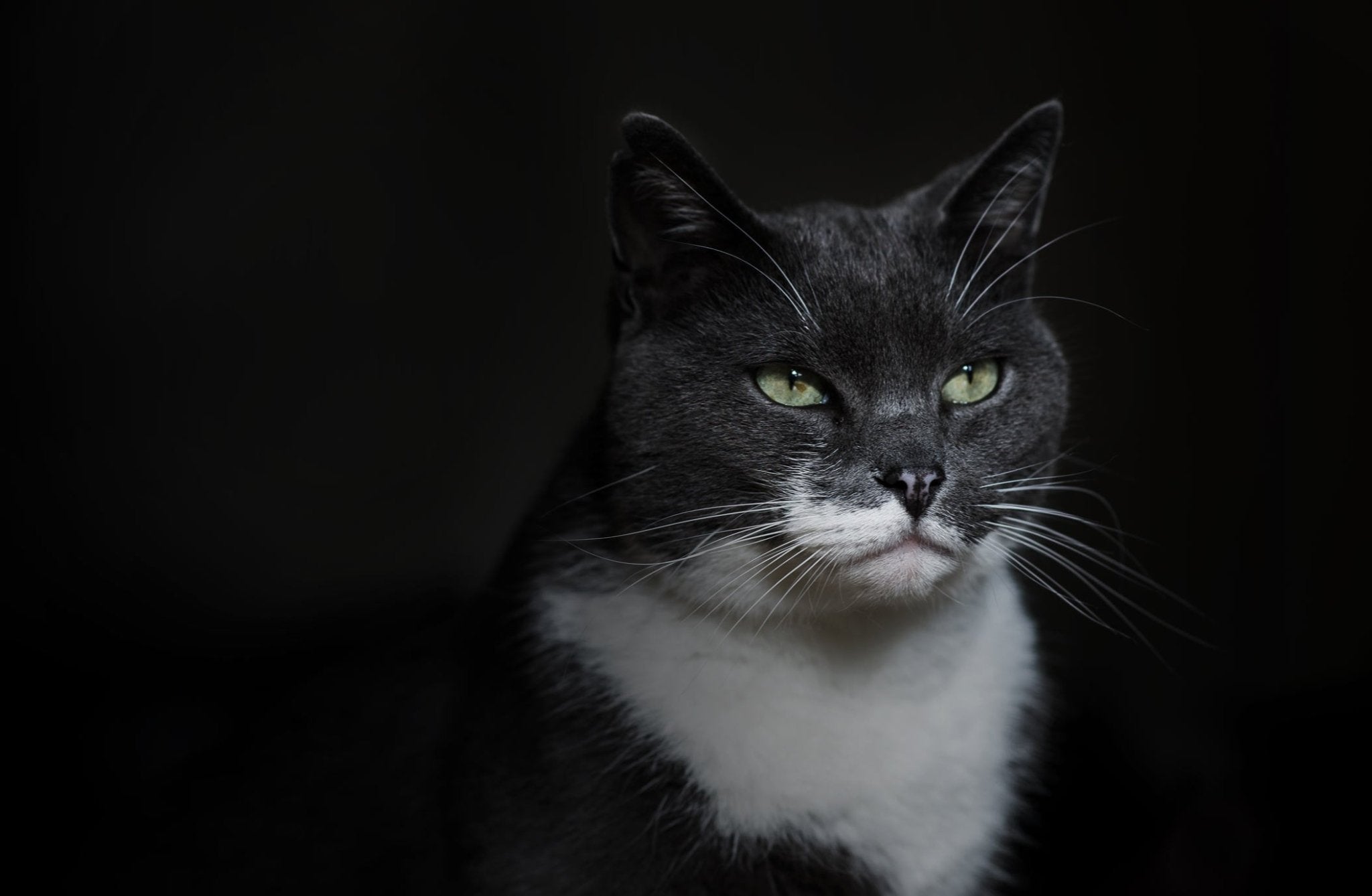


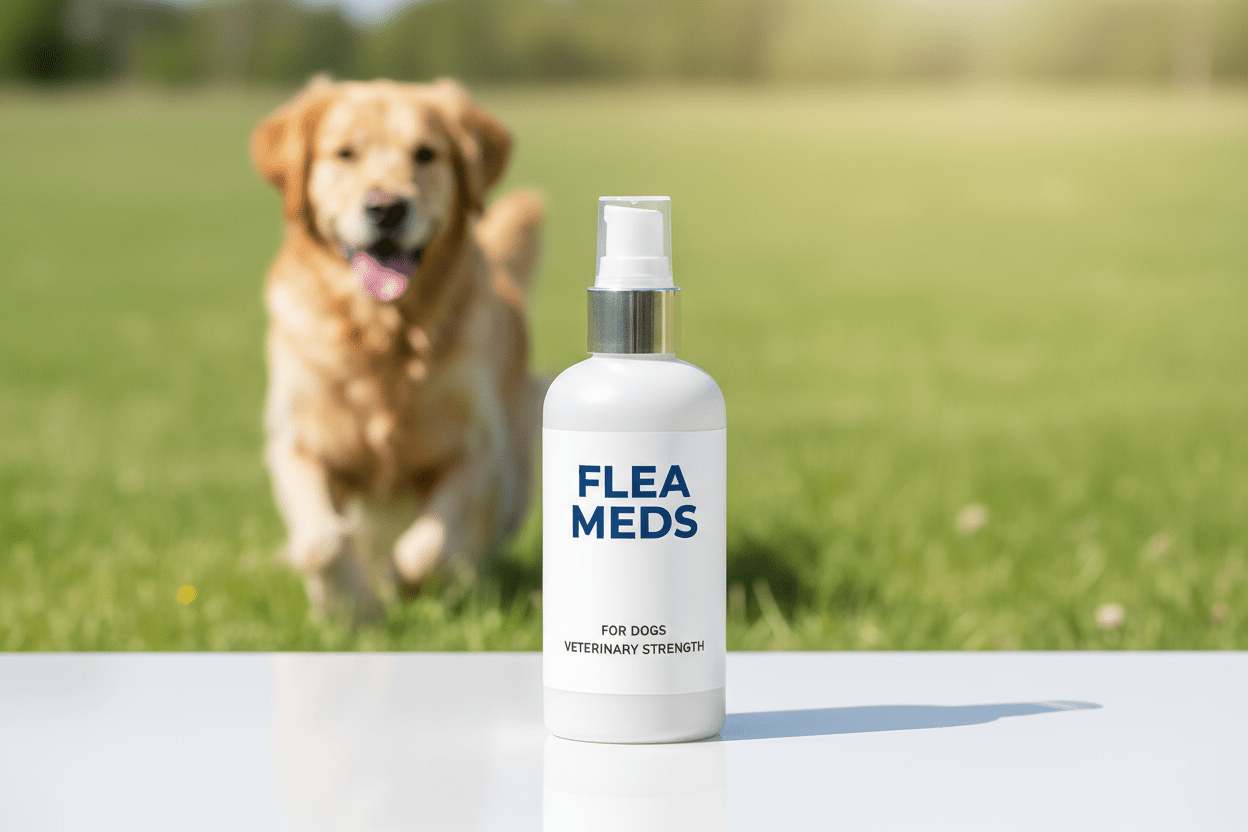


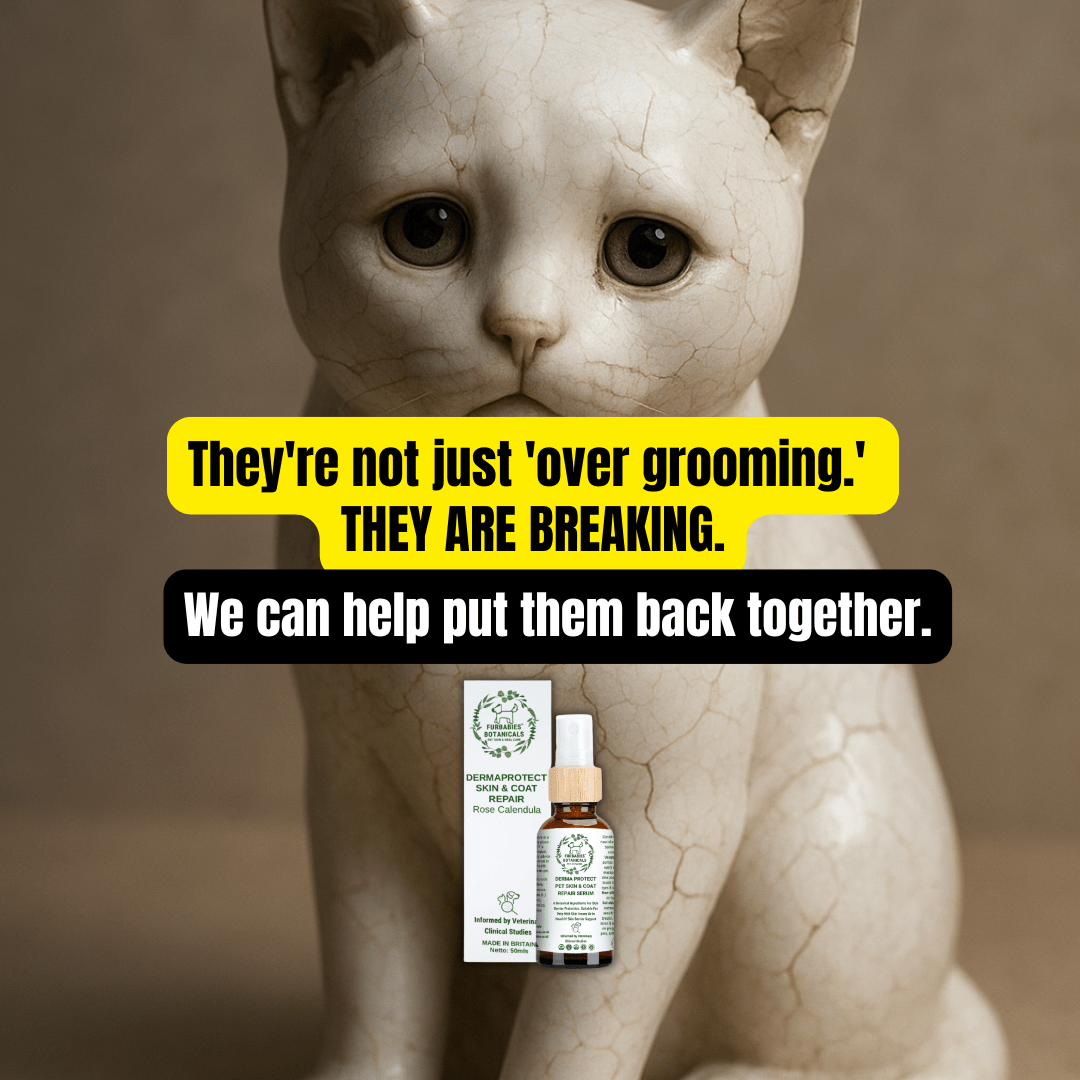
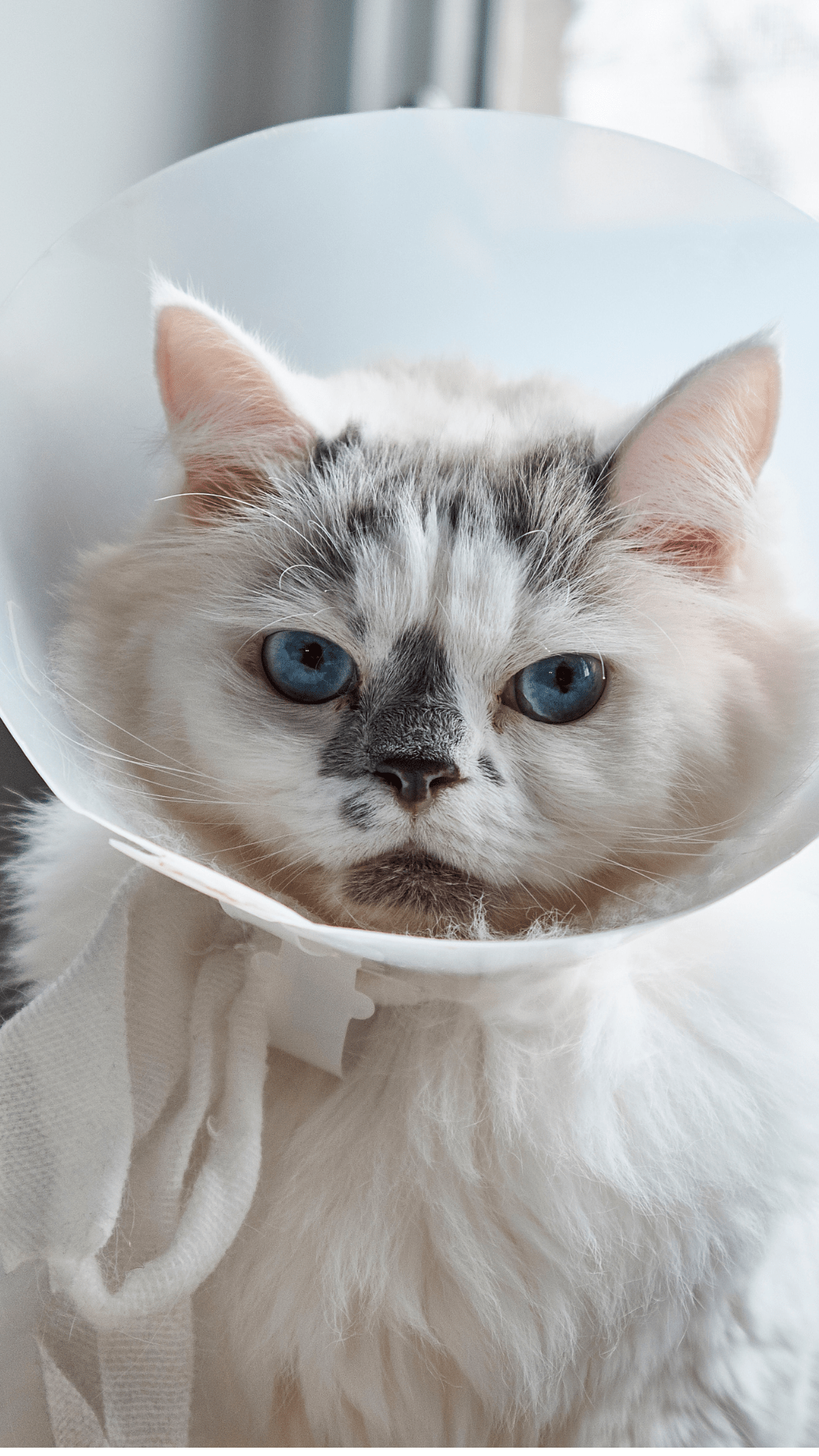
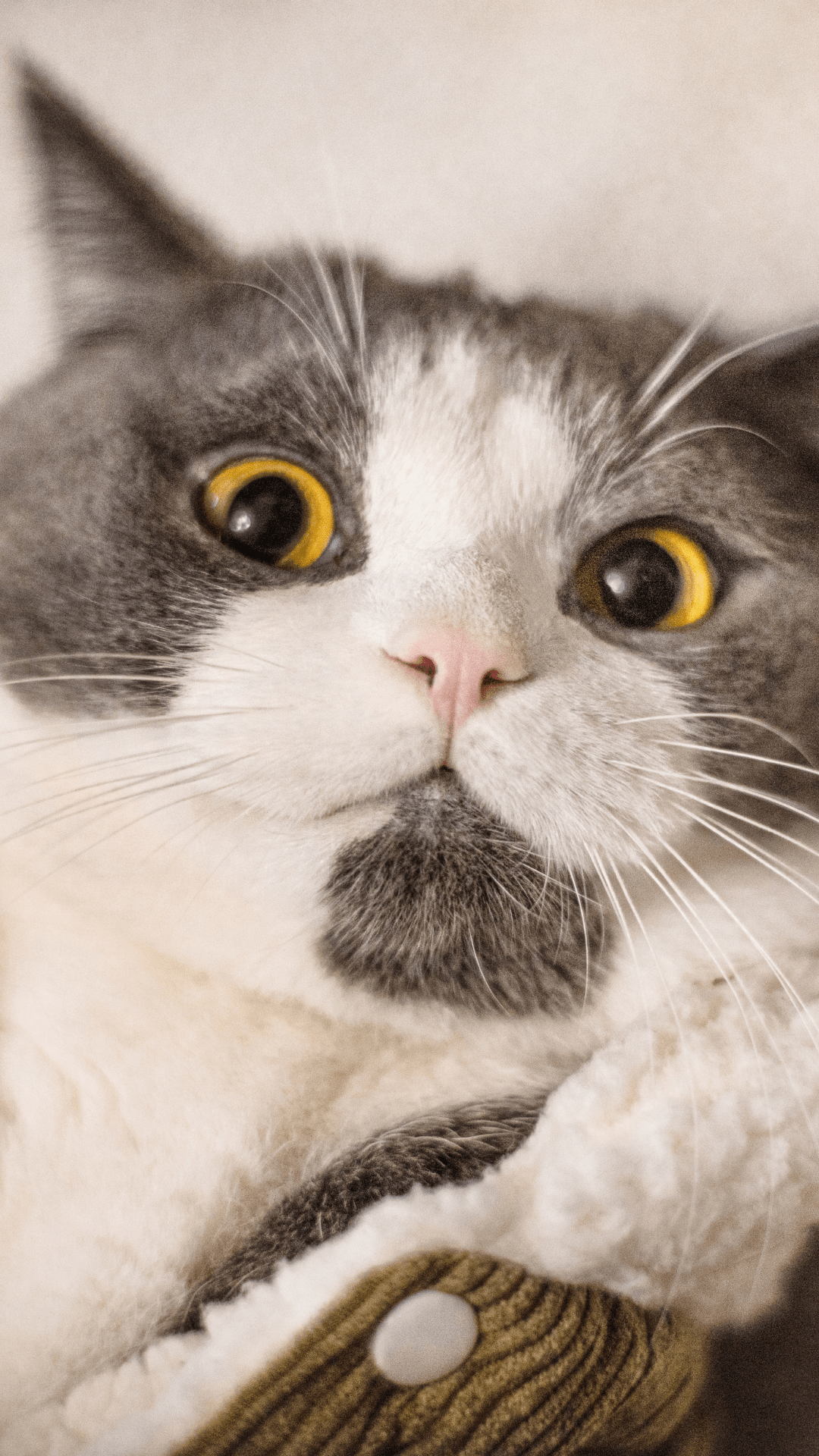


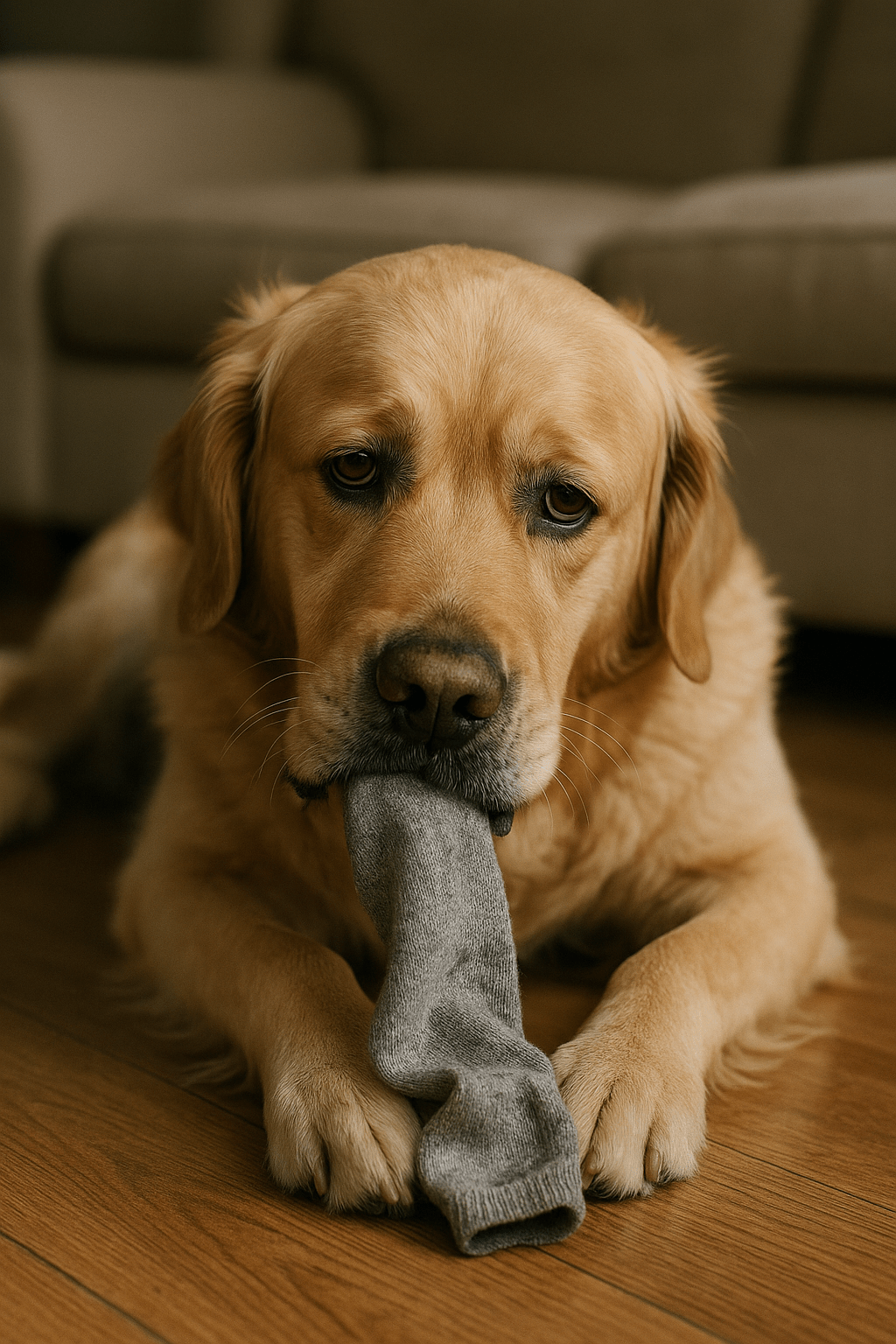
Share:
Why Does My Dog Eat Grass? A Clinical Pharmacist's Complete Guide to Canine Grass Consumption
Cat Chin Acne: Complete Guide to Causes, Symptoms & Diagnosis